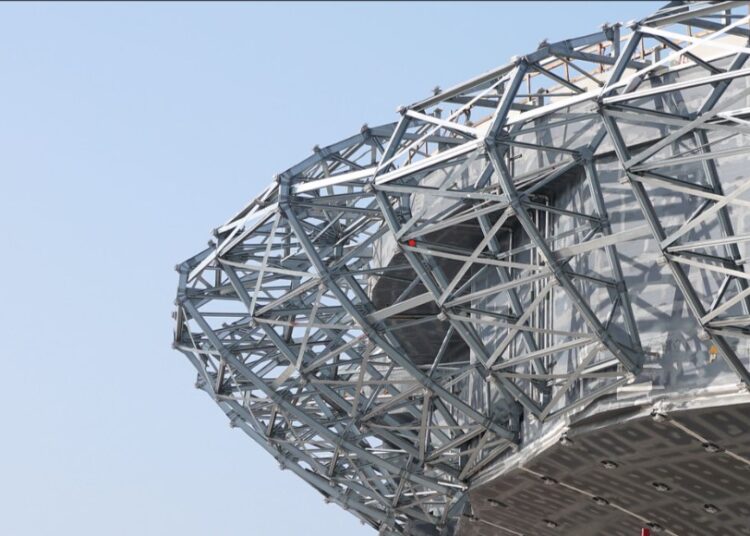Chicago didn’t want it, but Los Angeles and San Francisco engaged in a bidding war to get it. When George Lucas finally settled on Los Angeles, no one was happy about his $1 billion museum except him. Nothing but a vanity project, many said. The museum is “a terrible idea,” wrote Christopher Knight, the art critic for The Los Angeles Times.
Thanks to the Covid pandemic and other obstacles, the Lucas Museum of Narrative Art has been beset by more delays: it is not expected to open until 2025, seven years after ground was first broken on a parking lot across the street from the Los Angeles Memorial Coliseum with a promised 2021 opening.
The project is enormous even in its inchoate state: a massive repository for Lucas’ eclectic collection of 100,000 paintings, photographs, book illustrations and comic book drawings.
Its huge expanse of curving gray metal is appropriately futuristic to represent the man who created the Star Wars franchise. It stands five stories high, with enough gallery space to fill one-and-a-half football fields, and it takes 15 minutes to walk across its sprawling campus.
“We are committed to creating an incredibly complicated building,” said Sandra Jackson-Dumont, the museum’s director, as she led a visitor on a tour that, even after a full hour, did not cover the entire expanse of the building. “There isn’t a straight line in the whole place,” she added.

The slow pace is in great part evidence of the dramatic construction and design ambitions brought to this legacy project by Lucas and his wife, Mellody Hobson, the co-chief executive officer of the asset management firm Ariel Investments. That includes more than 1,500 individually fabricated curved panels of fiberglass-reinforced polymer that make up the building’s shell, three starship-like curved-glass elevators, an elliptical oculus, a rooftop garden dotted with full-grown trees and two 299-seat theaters, all resting on 281 seismic base isolators to protect the building — and its valuable collection of art — from a catastrophic earthquake.
The Lucas was designed by Ma Yansong, one of China’s most prominent architects; its gardens and parks were conceived by Mia Lehrer, the landscape architect.
Despite the name on the door and the pedigree, it will not be a museum devoted to Lucas’s film career. While the Lucas Museum will display some Star Wars-related pieces and other parts of the Lucasfilm archive, it’s scope aims to be much broader.
It is, as its name suggests, a museum devoted to art that tells stories — a rather vague label that includes a mix of works by artists ranging from Norman Rockwell to Robert Crumb, along with pieces by Frida Kahlo, Maxfield Parrish, Jacob Lawrence, Judy Baca and many, many others.
The 300,000-square-foot Lucas Museum stands out even in a wave of cultural construction that defines Los Angeles excess: the $650 million David Geffen Galleries at the Los Angeles County Museum of Art, set to open next year; the 24 year-reconstruction of the Hammer Museum that will be completed later this month; and the Academy Museum, which opened in 2021.
“It’s a very significant addition to the cultural scene of not just California but to the West Coast,” said Michael Govan, the head of Los Angeles County Museum of Art, or LACMA. “You can start to feel the impact that such a huge gift is going to have. That’s the big deal. Since it’s not public money — whatever George wants to do he can do. It’s a beautiful thing and you can see it.”












